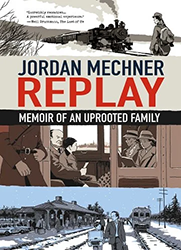Immigrant Girl, Radical Woman combines memoir, primary historical sources, and beautiful illustrations in a way that is both thoroughly entertaining and educational. At its core is the story of Taube Gitel Rabinowitz, a poor Jewish girl from Russia who immigrates to the United States, where she becomes Matilda Robbins — labor organizer, single mother by choice, prolific author, and Socialist party leader. From the great mill strikes of the early twentieth century to the Sacco and Vanzetti trial, Matilda’s story is intertwined with some of the most dramatic moments in the history of labor organizing and radical politics.
Matilda’s granddaughter, Robin Légère Henderson, provides illuminating commentary as well as striking woodcut-style illustrations. She calls her grandmother “a Victorian-era woman and a twentieth-century rebel in a small body,” and the description is apt. Matilda comes across as a woman both of and ahead of her time — one whose story resonates in our cultural moment of new kinds of gender and labor struggles.
In today’s parlance, Matilda’s life and written work, although composed decades ago, would be described as intersectional. In From the Life of a Wage-Earning Mother (reproduced in full as an appendix) she decried the enormous gap between the quality of childcare available to the poor and that available to the well-off. “There are books a‑plenty and educators … and modern theories on childcare … but what is there for the mother compelled to leave her child for the job?” The piece was rejected twice, from The Nation in 1927 and from Redbook in 1977.
Making this book far more than a memoir, Henderson conducted an enormous amount of research to fill in areas where Matilda was somewhat circumspect, and included primary historical material to connect her grandmother’s life and struggles to larger historical events. For example, in the section about the Rabinowitz family’s life in Russia, Henderson reproduces sections of the Russian May Laws, which severely restricted Jewish movement within the Pale of Settlement.
Though Immigrant Girl, Radical Woman is of interest to a general audience, it would be of particular relevance to the teenaged reader who has fallen in love with the All-of-a-Kind Family girls and is looking for a more grown-up read about turn-of-the-century American immigrant life as seen through the eyes of one extraordinary woman.





